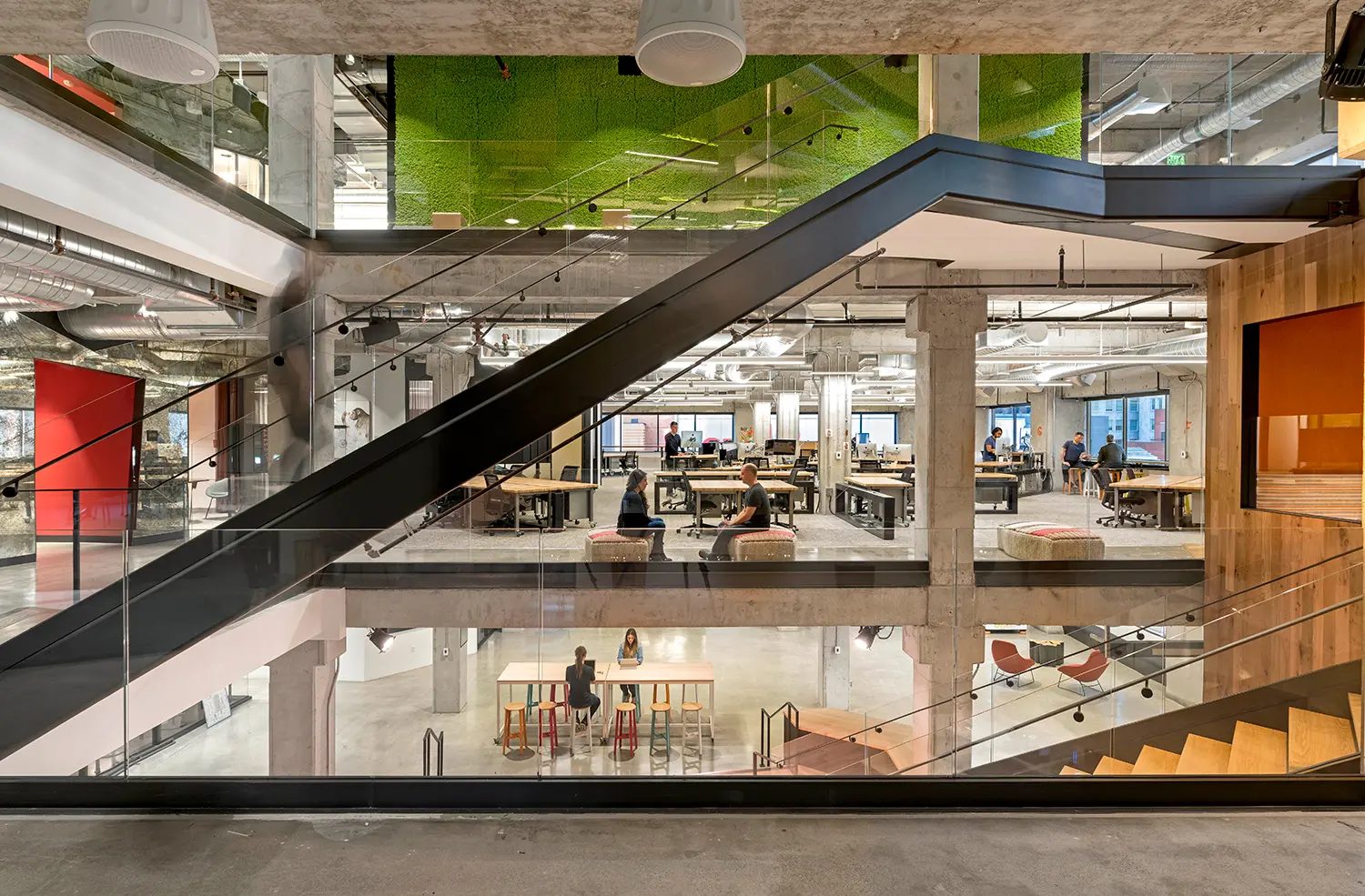
The workplace is transforming fast. Gone are the days of dull cubicles and harsh fluorescent lights. As 2026 approaches, offices are evolving into lively, human-centered spaces built to inspire productivity, spark collaboration, and support well-being. Here’s how to design a work environment where people truly thrive.
Human-Centered Design: Supporting Body and Mind
The focus has shifted from looks to people. Tomorrow’s workplaces put human needs first – balancing physiology, comfort, and mental clarity.
Think of furniture that moves with you – adjusting to posture and reducing strain. These small details protect long-term health and cut down on fatigue and absenteeism.
But true human-centric design goes beyond ergonomic chairs. It connects lighting, air quality, and temperature into one responsive system. Better design means fewer headaches, sharper focus, and happier teams.
According to Gensler’s 2025 Global Workplace Survey, employees who can choose where and how they work are 2.5 times more productive and nearly three times more likely to see their office as a great place to work. Empowering people to adjust light, noise, and temperature turns their workspace into a tool for performance and retention.
Activity-Based Work Zones: A Flexible Future
Hybrid work is here to stay – and flexible design keeps up. Activity-Based Working (ABW) replaces uniform desks with spaces for every mode of work.

Smart ABW offices include:
- Focus zones for quiet, concentrated work
- Collaboration lounges for brainstorming and group energy
- Recharging zones with natural elements for a mental reset
- Privacy pods for quick calls or small meetings
This model saves space and boosts engagement. With fewer desks sitting empty, companies cut real estate costs by up to 40% – while employees enjoy more choice and comfort.
But success isn’t automatic. Clear communication, tech tools, and cultural buy-in ensure ABW thrives. Leading companies use sensors and apps to track occupancy and offer real-time availability.
Tech-Driven Spaces: Smarter and More Responsive
Tomorrow’s office designs think for themselves. Sensors, AI, and analytics gather data to improve comfort and efficiency.
AI-powered tools now track usage patterns with incredible accuracy. Facility managers can measure occupancy, repurpose underused areas, and cut energy waste – often saving *20–30%* on HVAC while keeping comfort high.

Dynamic lighting follows natural rhythms, adjusting tone and brightness throughout the day. Some systems even respond to biometric feedback – tailoring light, temperature, and sound to each person’s needs.
The result: environments that adapt to people, not the other way around.
Sustainability and Circular Design
Environmental sustainability isn’t a trend – it’s a must. Forward-thinking companies are reimagining material choices with circular economy principles, keeping resources in use instead of sending them to waste.
Materials like bamboo, cork, and recycled plastics lead the way, combining renewability with performance. Living walls do double duty – beautifying spaces while cleaning the air.
Companies embracing circular design report energy savings of up to 50% and often achieve LEED or BREEAM certifications – proving responsibility pays off.
Brand Expression and Inclusive Design
Every workspace tells a story. Offices now reflect brand identity and values through personalized design, cultural elements, and genuine inclusivity.
Inclusive design means more than wheelchair access – it creates spaces for all ways of thinking and working. With 15–20% of people identifying as neurodivergent, providing control over light, sound, and layout isn’t just kind – it’s smart.
Cultural elements – from local art to regionally inspired craftsmanship – bring warmth and authenticity, making every office feel truly connected.

The Artisanal Touch
In a world of mass production, authenticity stands out. “Artisanal upcycle” celebrates craftsmanship, honest materials, and visible design integrity. Think hand-finished wood, exposed joinery, and storytelling through details. These touches humanize the workplace and connect people to the space.
Lighting for Well-Being
Light influences energy, focus, and mood – and 2026 designs harness it to boost well-being. Dynamic circadian lighting shifts color and intensity through the day, syncing our bodies with natural rhythms. Cool light in the morning sharpens focus; warm tones in the evening promote calm.
Bold Textures, Balanced Colors
Color psychology drives creativity and focus. Blues and greens quiet the mind; yellows energize; and neutrals create harmony. The best offices balance boldness with calm – visual inspiration without overload.
Designing the Future of Work
As 2026 approaches, the office stands as more than a workspace – it’s a competitive advantage. By embracing human-centered design, smart technology, and sustainable principles, you can build an environment that attracts talent and fuels performance.
Ready to future-proof your workplace?
Let Capital Choice Office Furniture create a space where your people – and your business – thrive.